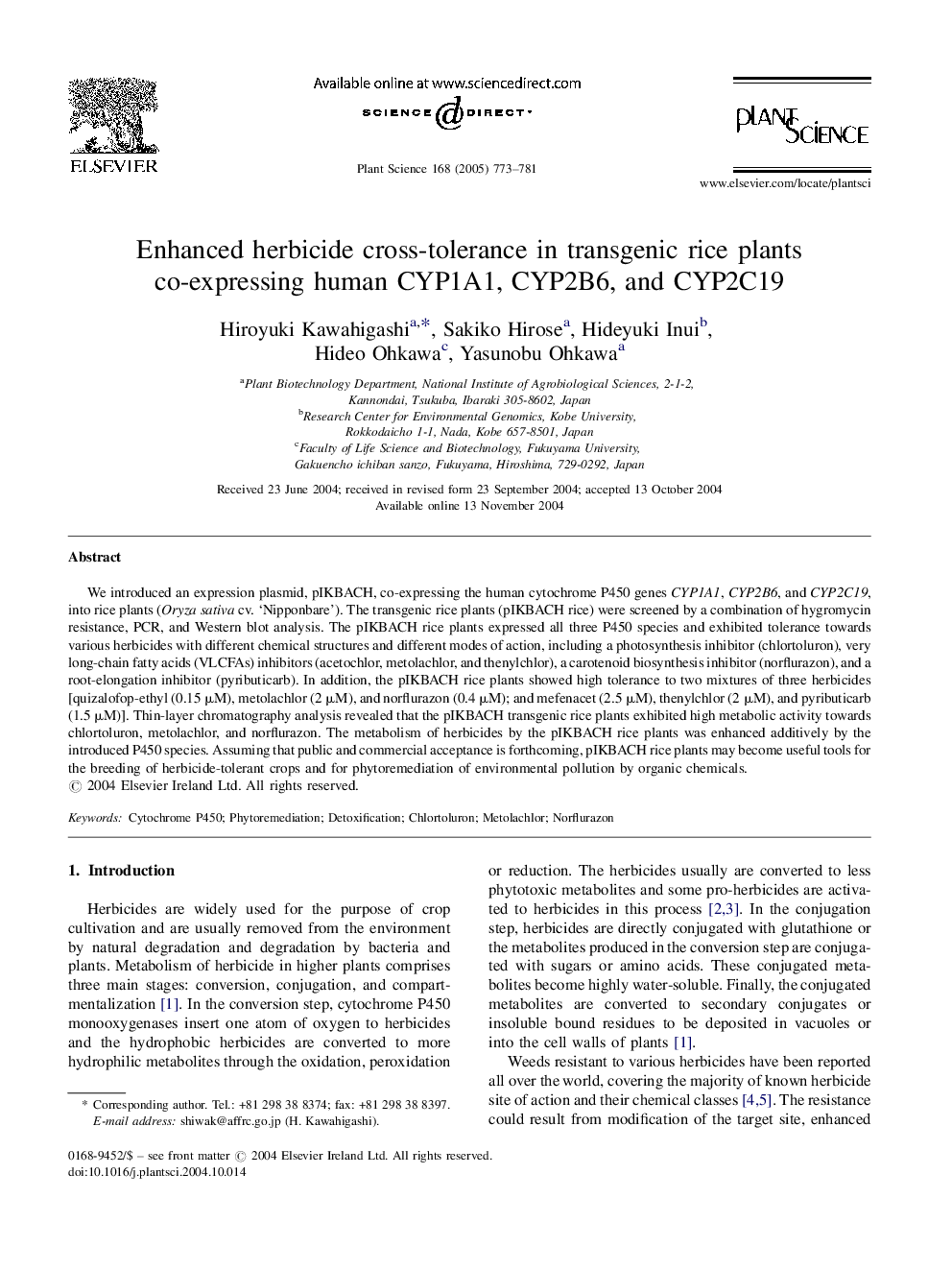| Article ID | Journal | Published Year | Pages | File Type |
|---|---|---|---|---|
| 10841200 | Plant Science | 2005 | 9 Pages |
Abstract
We introduced an expression plasmid, pIKBACH, co-expressing the human cytochrome P450 genes CYP1A1, CYP2B6, and CYP2C19, into rice plants (Oryza sativa cv. 'Nipponbare'). The transgenic rice plants (pIKBACH rice) were screened by a combination of hygromycin resistance, PCR, and Western blot analysis. The pIKBACH rice plants expressed all three P450 species and exhibited tolerance towards various herbicides with different chemical structures and different modes of action, including a photosynthesis inhibitor (chlortoluron), very long-chain fatty acids (VLCFAs) inhibitors (acetochlor, metolachlor, and thenylchlor), a carotenoid biosynthesis inhibitor (norflurazon), and a root-elongation inhibitor (pyributicarb). In addition, the pIKBACH rice plants showed high tolerance to two mixtures of three herbicides [quizalofop-ethyl (0.15 μM), metolachlor (2 μM), and norflurazon (0.4 μM); and mefenacet (2.5 μM), thenylchlor (2 μM), and pyributicarb (1.5 μM)]. Thin-layer chromatography analysis revealed that the pIKBACH transgenic rice plants exhibited high metabolic activity towards chlortoluron, metolachlor, and norflurazon. The metabolism of herbicides by the pIKBACH rice plants was enhanced additively by the introduced P450 species. Assuming that public and commercial acceptance is forthcoming, pIKBACH rice plants may become useful tools for the breeding of herbicide-tolerant crops and for phytoremediation of environmental pollution by organic chemicals.
Related Topics
Life Sciences
Agricultural and Biological Sciences
Plant Science
Authors
Hiroyuki Kawahigashi, Sakiko Hirose, Hideyuki Inui, Hideo Ohkawa, Yasunobu Ohkawa,
